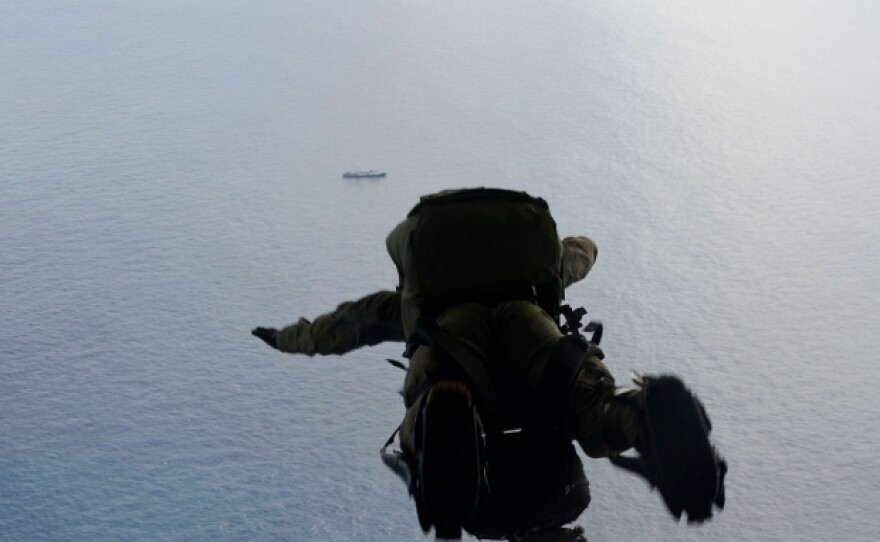
U.S. Air Force rescuers on Monday were stabilizing two badly burned Chinese fishermen aboard a fishing vessel hundreds of miles off Mexico's Pacific coast before evacuating them by helicopter.
The two were among 17 Chinese crew members believed aboard a fishing vessel that caught fire and sank in the Pacific Ocean. Two died from burn injuries, seven were determined to be in good condition and six are believed missing, said Maj. Sarah Schwennesen of Davis-Monthan Air Force Base in Tucson.
A Venezuelan fishing vessel spotted a life raft with 11 fishermen on Friday and sent a call for help.
Responding to the call, airmen from the Air Force's 563rd Rescue Group parachuted into the water on Saturday afternoon and used inflatable boats to reach the Venezuelan vessel.
Rescuers treated the two burn victims, stabilizing them enough that they can be hoisted into helicopters, transferred to Cabo San Lucas, the closest city in Mexico, and then taken to a hospital in San Diego.
Schwennesen said Monday afternoon that she was awaiting word on when the evacuation would begin. Language barriers hampered communication between crews and officials, slowing new details on what happened out at sea, she said.
The two bodies and seven crew members were transferred to a Chinese-flagged vessel in the area to be taken home, Schwennesen said.
It was unclear what caused the fire aboard the Chinese fishing vessel before it sank more than 1,000 miles off Mexico's Baja peninsula, Air Force and Coast Guard officials said.
The officials said neither of their branches was searching for the six fishermen believed to be missing and they did not know who else would be looking.
"The Air Force has not been tasked with that mission," Schwennesen said.
Rescuers were preparing the patients to be loaded into metal baskets and then lifted off the Venezuelan boat, Air Force officials said. Each basket will be hooked via a steel cable to a separate helicopter overhead.
One rescuer will latch on to the outside of the basket as it is hoisted up to the helicopter so the patient can continue to be monitored.
A second helicopter will airlift the second patient and another rescuer. The remaining rescuers will also be hoisted off the ship to accompany the two patients.
"It's very difficult to hoist off a ship, because the ship is moving, the waves are moving up and down, the wind is blowing things around," said Air Force rescuer Tech. Sgt. Brandon Daugherty, who has done such missions but was not part of the latest. "It takes a lot of coordination."
It's expected to take four hours for the helicopters to then reach Cabo San Lucas, a resort destination at the tip of Mexico's Baja peninsula that is the closest city.
From there, the injured will be flown to a regional burn unit at the University of California San Diego.
It was the second such dramatic sea rescue by U.S. crews in recent weeks.
Last month, three federal agencies, a fixed-wing aircraft, a Navy warship and scores of personnel successfully rescued an ill American baby girl and her family from their broken down sailboat 900 miles off Cabo San Lucas.







